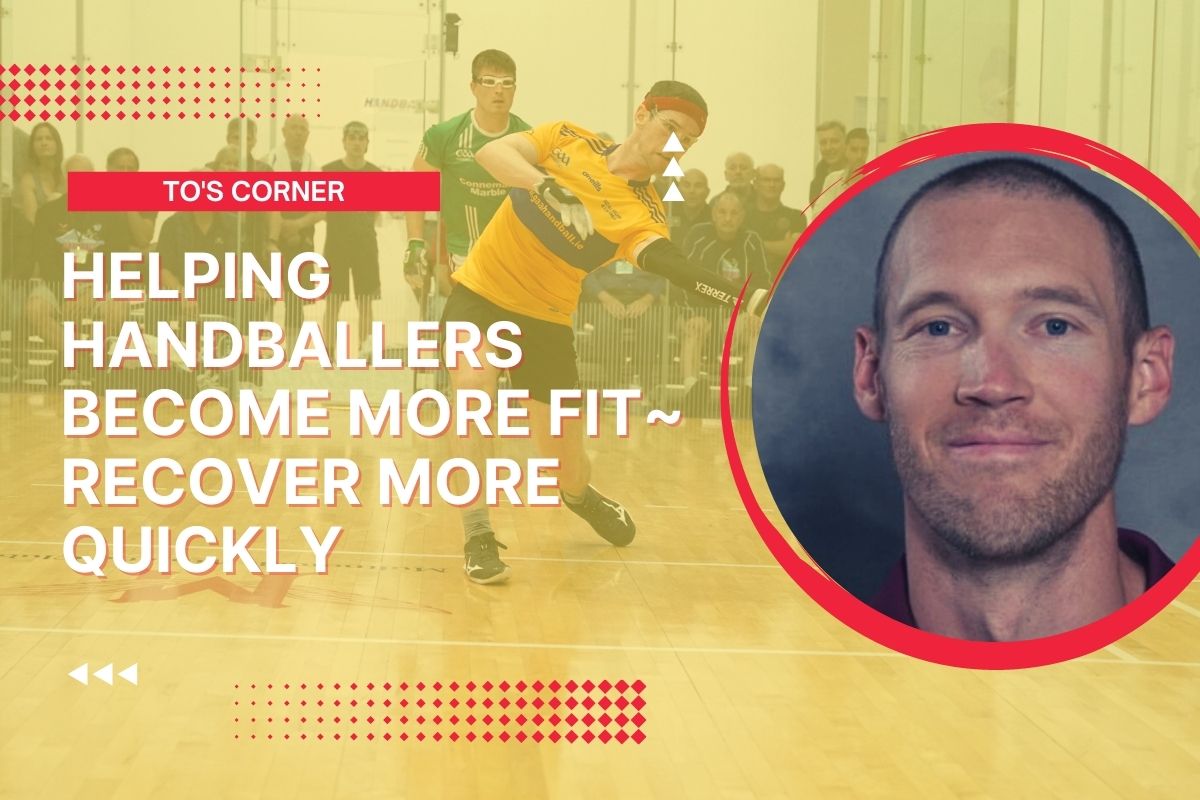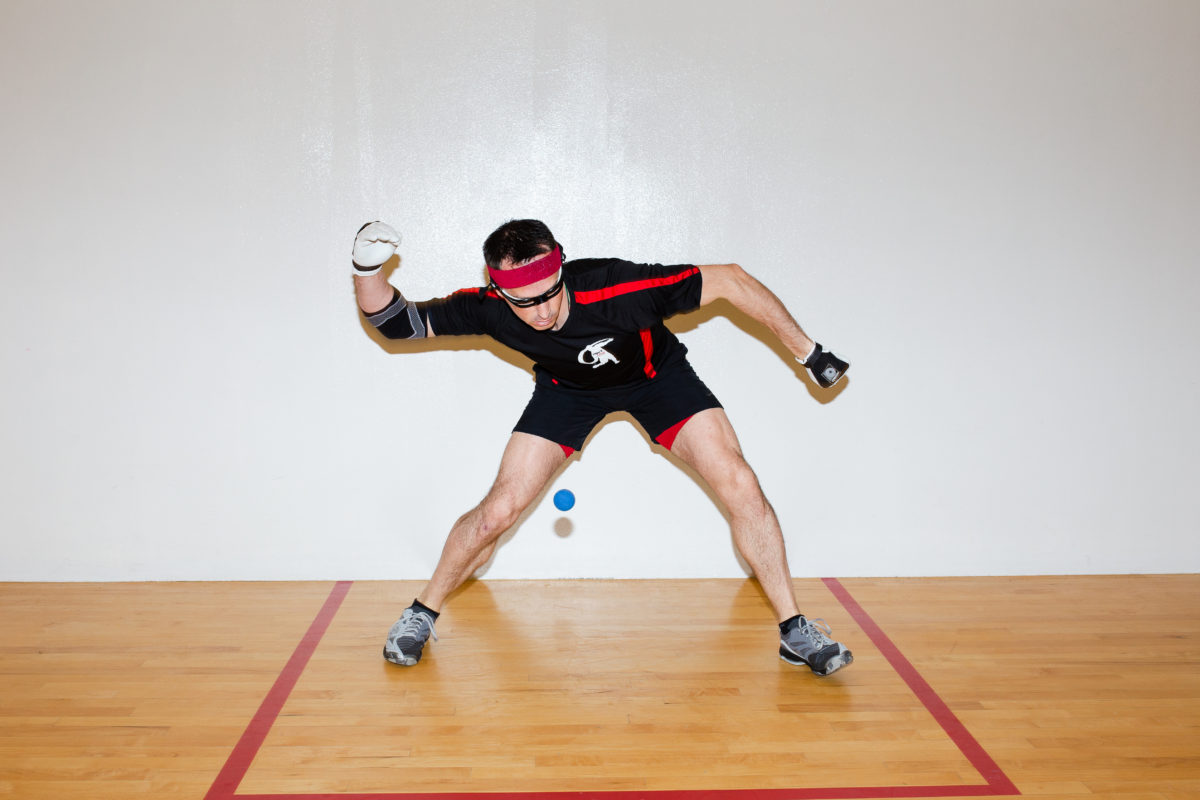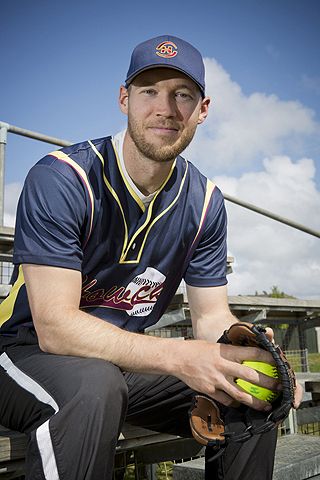Why Strength Is Important For Quickness & Agility
T.O.’s Corner: Helping Handballers Become Fitter and Recover More Quickly
WPH Press, Tucson, AZ
By Travis Owen, MS, CSCS, PN1
Besides helping with injury prevention, which could be an entire different article on its own, strength is an important quality for handball performance. I’d like to tie in the biomechanics of angles to demonstrate the importance of strength.
First, let’s start with quickness & agility. One may not always think of “strength,” because often the first thing that comes to mind when thinking of strength is size, which isn’t necessarily accurate. Yes perhaps if we were talking about absolute strength, however when talking about strength and its relation to quickness and agility, we must consider relative strength; that is, relative to body mass.
The reason 300+ lb. NFL lineman can move so incredibly quickly is largely due to their relative strength. They may be big, but their overall strength is such that it doesn’t matter- they can still move their bodies incredibly quickly. Why is it that the smaller guys are generally more agile? On top of having less force of gravity, due to less mass, their relative strength (strength:bodyweight ratio) is very advantageous since their “bodyweight” is in the denominator of that ratio.
So, to relate relative strength to agility/quickness, let’s look at some important angles when it comes to proper movement.
Take a look at Paul Brady as he’s about to move laterally to retrieve a shot. His left leg is pushing the ground with a lot of force as his right foot is slightly off of the ground (about to hit the ground as he moves). Because of his entire bodyweight being pushed laterally, the force about to be exerted on his right foot, into his leg, is substantially more than “just” his bodyweight (e.g. if he were to say, just statically balance on his leg). Now, of course, his leg strength is plenty efficient to handle this type of angle. You may also notice how low he is.
“Well why can’t I get that low!?” I can hear us all saying. Well, our bodies instinctively know what we can or can’t handle. Want to “allow” your body to get that low? Improve not just your mobility, but also your strength, so that you can not only get into that position, but even better- exert force into that position. More force than if you were to just statically hold it. That is what quickness and agility is: the ability to quickly exert force.
Plyometrics, agility ladders, etc. are certainly all great. These are tools, just like strength. But if strength is not an initial foundation, then the plyometrics…quick feet… stretching or yoga…can only get someone so far. If strength is improved, we then raise the ceiling for more force being put into the plyometrics, quick feet, etc.
When it comes to leg strength, closed-chain exercises are the biggest bang for your buck. What are closed-chain exercises? Opposite to open-chain, which means the limbs are “free” in the air, closed-chain exercises means your feet (or at least one foot, if performing a single-leg variation) will be on the ground. This allows the foot to “grip” the ground and transfer force up into the leg, just like what happens in a quick movement on the court as in the above Brady photo.
The squat and variations are of course excellent lower body closed-chain exercises. For some tips on the squat and good alternative exercises to perform, check out prior articles Part 1: The Squat & How Low Should You Go? and Part 2: The Squat & Alternatives to the Back Squat.
Even though we may only think lower body strength is relevant, the kinetic chain (see this prior article for elaboration on the kinetic chain) is an important concept that allows for even more power, by having a strong functional core and a mobile T-Spine- at least when it comes to the handball swing.
This is because, even though we may be able to exert force into the ground with lower body strength, the core then needs to transfer that force by maintaining posture as we move…since your body isn’t simply moving its legs, but moving its entire torso when it comes to agility & quickness.
Planks and isometric core exercises are going to be superior to crunches and sit ups for a variety of reasons, mostly covered in the video linked above. But when you hear the phrase “functional core” exercises, basically what is being articulated is that the core’s “job” is not to flex and or extend, but rather to stay as neutral/tight as possible, which then allows movement to happen at the limbs. Or in the case of a handball swing, produce more force and power into the arm (so long as there is sufficient enough T-Spine mobility).
To tie it all back together, strength itself in all areas, but particularly the legs and core, is an important metric to consider for anyone who wants to increase their agility and quickness. From building on a good foundational strength base, this will raise the “ceiling” for training when it comes to power/quickness due to the body’s ability to handle more overall force.
Travis Owen is the founder of his training service Travis Owen Performance (T.O. Performance) and has been involved with handball since picking it up in college in 2005. CSCS Certified through the National Strength & Conditioning Association and having earned his Master’s degree in 2011, Travis has been training individuals of all types for over 10 years. With an initial focus on softball & baseball athletes, Travis is starting to expand his reach to handball players and would like to elevate the game by providing articles and videos, as well as program design or training for anyone interested.
Contact Travis by email at owenperformanceTO@gmail.com, or travisowenperformance.com












